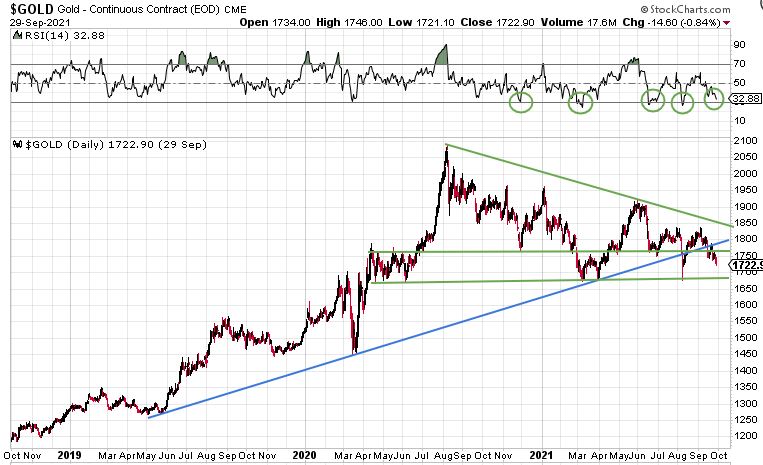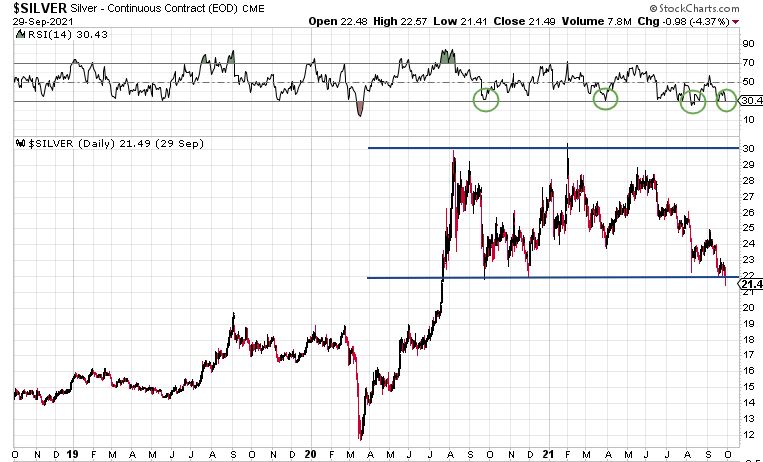
September 2021
It's fall. Another change of seasons is upon us. It may seem cliche to say that we are in the midst of a change in more than just weather seasons, however, I doubt many of you would disagree with us.
There are many different opinions about what the next "season" looks like. Usually, that means we can expect a dose of the unexpected. It's not like that hasn't been the case for the last eighteen months, so why shouldn't we expect more of the same? Our sense here is that the intensity level is going to increase, which makes now more than ever a good time to consider the benefits of holding precious metals.
For the past year, we've focused on the inflation hedge position of precious metals in your portfolio. Now it's time to also consider the "portfolio insurance" position they play. A very important one indeed during a change of seasons such as what may be ahead of us. As always, we remain optimistic about where this will all end up. There may just be a few bumps getting there.
All the best,
The OWNx Team
Gold and Silver
What Do the Charts Say?


Well, there is no denying the reality that the story the charts for both gold and silver are telling us something has changed. They have become less bullish in the short term. However, there are also underlying factors that must be considered as we seek to understand where the precious metals market is going.
Let's start with gold. For three years it held a marked uptrend line during all pullbacks. That is no longer the case. The trendline has been decisively breached. Now we see a target forming at an 18-month "congestion range" between roughly $1,700 and $1,675. As of today, gold has fallen to within $25 of that range. As the third quarter closes, gold has rallied back to the $1,750 range. Still, it wouldn't be a surprise if that support range is tested in the coming days/weeks. If that happens, it will pull the "relative strength" indicator (top of chart) into what has become a pretty reliable buy range. It's very close now.
What has formed now is a "falling wedge" (indicated by green lines). This pattern becomes a very important indicator to determine the length of this correction. If it breaks out to the upside, it is probably over and new highs can be expected. If it breaks to the downside, the correction could continue into at least 1Q 2022.
Now, let's look at silver. It has just breached the bottom of a two-year sideways consolidation channel. That may seem important, but it may not be as important as you might think. When analyzing the precious metals market overall for intermediate and long-term trends, it's important to realize that the silver chart must take a back seat to gold. There are two primary reasons for this.
First, gold is much more liquid and trades in the world of central and large bullion banks. When dealing with economic, geopolitical, and financial system realities, gold is a much better indicator of market trends. Second, the silver "beta" has to be considered. The "beta" is the difference in the rate at which silver rises and falls compared to gold. Silver has a higher "beta" relative to gold, which means it generally rises and falls in the same direction as gold but at a higher percentage both ways. Sometimes this momentum causes it to paint a very different chart than gold. The case in point is right in front of us.
When the metals fell from their April 2020 highs, silver fell much further in terms of percentage. Also, due to a reported short squeeze in late January 2021, the price briefly hit a new bull market high. These two events caused silver to carve out a sideways channel rather than match gold's down-sloping trendline. When the two metals "diverge" in their charts, gold is where we look to filter out the signal from the noise. Silver's breach of its bottom channel doesn't mean all that much in terms of determining the duration of this present correction/consolidation in the broader precious metals market.